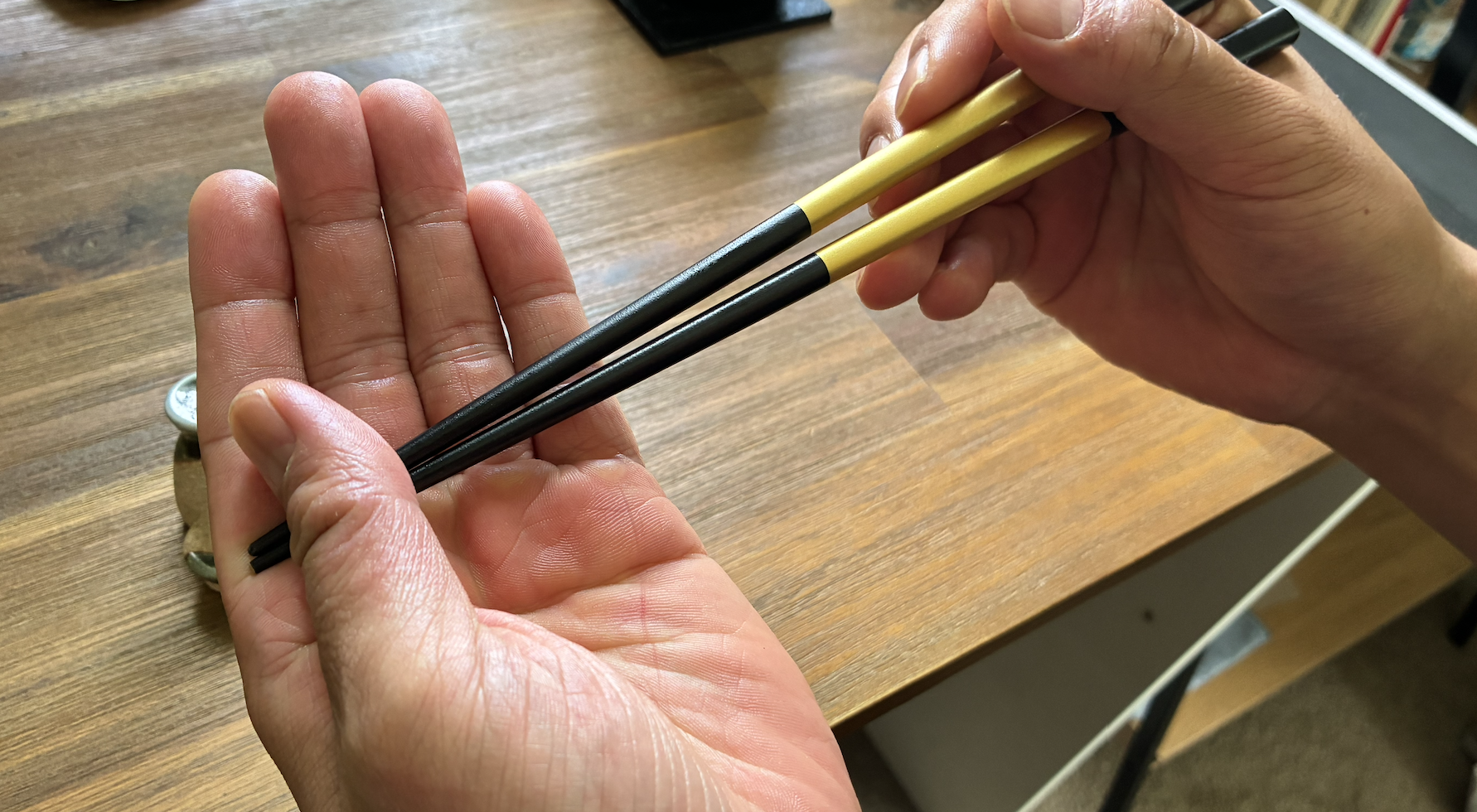What is the first thing that comes to your mind when it comes to Japanese food culture?
Sushi? Ramen? Teppanyaki? Whatever it might be, one of major players in Japanese food culture is chopsticks. In fact, Japanese table manners, particularly chopstick etiquette is so important in Japan. Chopsticks aren’t just tools – they carry cultural meanings. This means using them improperly can come off as rude and even disrespectful, even if you don’t realise it.
This article will show you how to use chopsticks correctly when you dine in Japan. You will also find out about 嫌い箸 (Kirai bashi) or chopsticks taboos.
箸の作法 (Hashi no sahō) – Chopstick Manners
作法 (Sahō) means the way in which something is done as an expression of respect and affection for it. Through its long history, Japan developed unique Sahō for use of chopsticks which reflects Japanese aesthetics.
三手 (San te) – 3 Moves
手 (Te) means hand, but it’s also used as a counter for move in a game of Go or Shogi. The way you pick up chopsticks from a table is called 三手 (San te) – 3 moves.
1️⃣ – pick up the right end of the chopsticks with your right thumb and index finger, and lift them up.
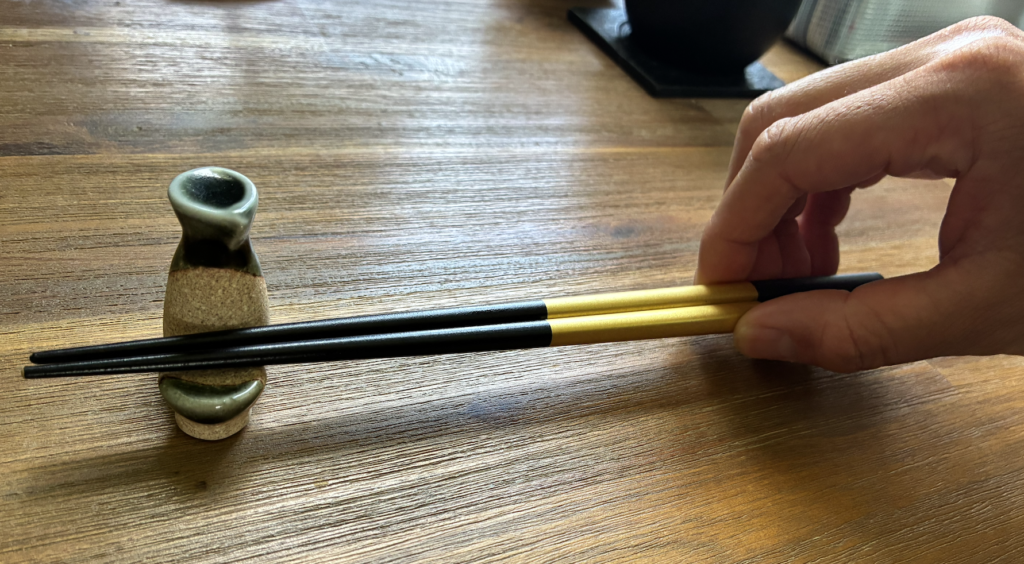
2️⃣ – Rest the chopsticks on the palm of your left hand.

3️⃣ – Use your right hand to appropriately hold the chopsticks.
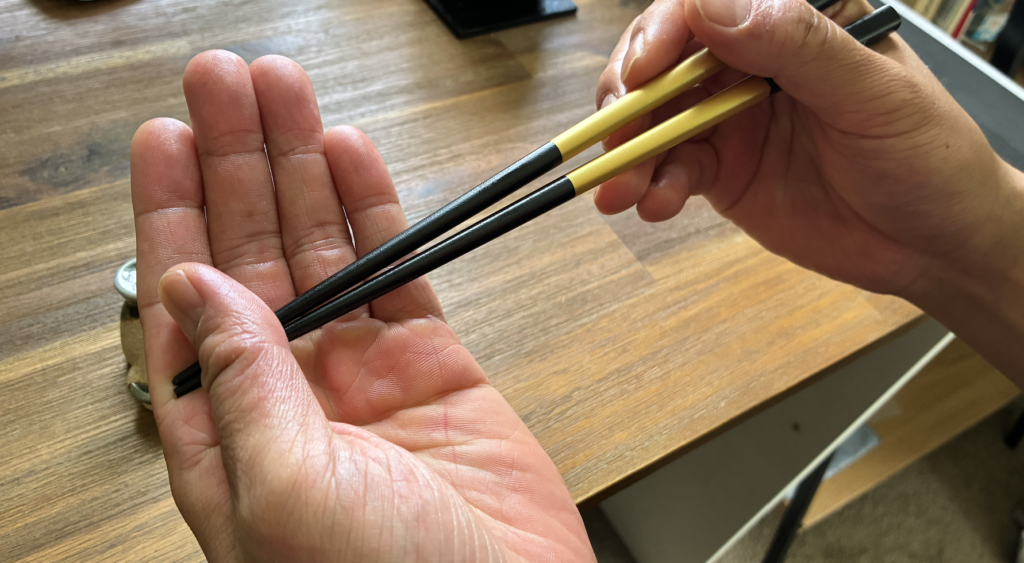
How to Hold Chopsticks Correctly
1 – Place the first chopstick (lower one) in the crook of your thumb, resting it on the base of your thumb and the side of your ring finger. This chopstick does not move.

2 – Place the second chopstick (upper one) like a pencil, between your thumb, index, and middle finger. This one moves to grip food.
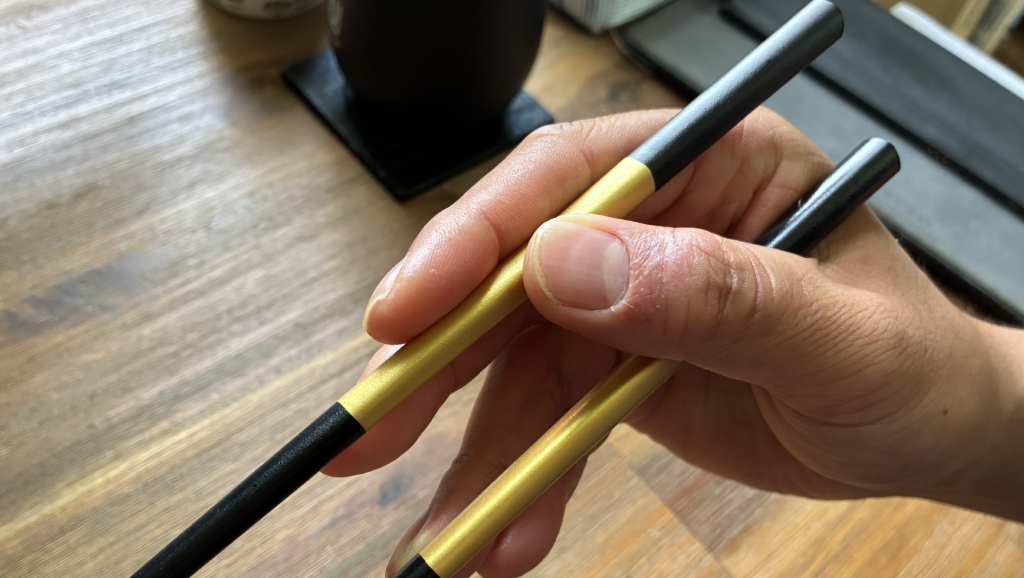
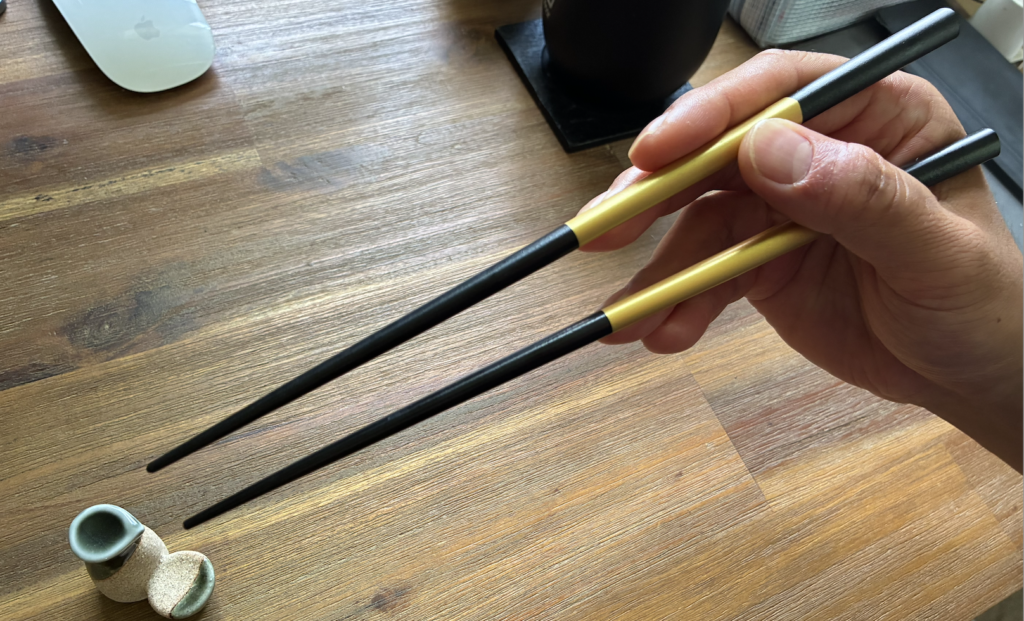
嫌い箸 (Kirai bashi) – Chopsticks Taboos
迷い箸 (Mayoi bashi)
迷う (mayou) means ‘to lose one’s way’. Mayoi bashi refers to waving your chopsticks back and forth over dishes deciding what to eat. This can seem indecisive or greedy and is considered rude.

ねぶり箸 (Neburi bashi)
ねぶる (neburu) is from a dialect spoken in western Japan. This word means ‘to lick’ (as in なめる in the standard Japanese). Neburi bashi is when one licks or sucks on their chopsticks. This is considered unhygienic and childish. It breaks the refined atmosphere of a Japanese meal.

せせり箸 (Seseri bashi)
挵る (seseru) means ‘to pick at something with chopsticks’ or ‘to pick one’s teeth’. Seseri bashi is when one uses chopsticks to poke or prods at food, as if inspecting it.
This gives the impression that you don’t trust the food—or worse, that you’re playing with it. Seseri bashi canl also refer to using chopsticks like a toothpick—to pick food out from between your teeth.
拾い箸 (Hiroi bashi) Or 箸渡し (Hashi watashi)
拾う (hirou) means ‘to pick up’ and 渡す (watasu) means ‘to hand over’.
Hiroi bashi or hashi watashi is when one passes food directly from one pair of chopsticks to another. This mimics a funeral ritual involving bones of the deceased.
In a Japanese funeral, it is a custom for the mourners to pick up bones of the deceased with chopsticks and pass them from one pair to another before placing them in an urn.
As the act of passing something from one pair of chopsticks to another is strongly associated with this funeral custom, hiroi bashi or hashi watashi are considered as one of the most serious taboos in Japanese dining etiquette.

刺し箸 (Sashi bashi) And 指し箸 (Sashi bashi)
刺す (sasu) means ‘to stab’ while 指す(sasu) means ‘to point’. These words have the same pronunciation but are written with different kanji.
刺し箸 (Sashi bashi) is stabbing food with your chopsticks to pick it up. It resembles offerings made to the dead and is considered aggressive and improper.

指し箸 (Sashi bashi) is pointing at something or someone with your chopsticks and this is also considered rude.

寄せ箸 (Yose bashi)
寄せる (yoseru) means ‘to bring near’. 寄せ箸 (Yose bashi) is when one uses their hopsticks to pull dishes closer to yourself.
Chopsticks are strictly for picking up food, and using them to move dishes is seen as lazy and disrespectful.

立て箸 (Tate bashi)
立てる means ’to stand’. 立て箸 (Tate bashi) is when one sticks chopsticks upright into a bowl of rice. This resembles how an offering is presented to the deceased.

まとめ
Many Japanese chopstick taboos are tied to funeral customs or ideas of cleanliness.
Learning these gestures isn’t just about good manners—it’s about showing respect for the culture, the food, and the people you share a table with.
Let’s review words we learned today!
迷う (mayou): to lose one’s way
ねぶる (neburu): to lick. This word is from a dialect in western Japan.
挵る (seseru): to pick at something with chopsticks, to pick one’s teeth.
拾う (hirou): to pick something up
刺す (sasu): to stab
指す (sasu): to point at something
寄せる (yoseru): to bring near
立てる (tateru): to stand
